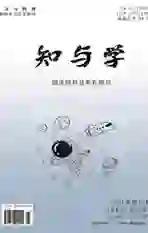Unit 3 Where did you go?B Read and write教学设计
2021-10-10韦敏
韦敏
一、教学内容分析
本课时是人教版六年级下册第三单元第五课时。围绕“生活充满好消息和坏消息”这一话题展开,主要通过阅读文本学习词汇basket, part, licked, laughed, dress up以及能够从阅读中获取有用的句型口头描述自己的一天。能够通过活动训练捕捉重要的信息,提升学生的思维能力,激发学习英语的兴趣,并引导学生建立事物都有两面的概念,好事坏事没有绝对,可以互相转换,要保持乐观的心态。前几课时词汇、对话的学习为本课时的学习奠定了基础,本课时是第三单元知识的拓展和延伸。本课时的重点是单词basket, part, licked, laughed的听、说、认读以及能够从阅读中获取有用的句型口头描述自己的一天,并能写出一个语段。
本课时Read and write的板块,分为两个部分。第一部分是读前活动,呈现了吴一凡外出捡了一只叫Max的小狗,并带回家的场景。通过看图,阅读人物对话,讨论故事的开端和预测故事的进一步发展。接下来呈现的是吴一凡写的日记,日记上讲述了这一天发生在吴一凡一家的三件好事和两件坏事。第二部分是书写活动,写出发生在自己身上的一件好事、一件坏事和相应的对策。本课时内容的设计贴近我们的生活,非常吸引人,大大的提高了学生的阅读兴趣。
本课时篇幅较长,信息量大,知识点较多,对于学生的理解和运用有一定的难度。教师要结合图示、语境帮助学生理解生词。基于语篇的整体性原则,把握主体脉络,引导学生在自主学习,小组讨论交流中获取信息,锻炼学生的思维能力,培养学生良好的阅读习惯和方法。
二、学情分析
对于六年级的学生来说,他们已经掌握了表示过去时的动词短语,他们已经能够用最基本的句子表达发生在过去的事情,但是在教学中,教师要注意以旧引新,通过动词原形与过去式的对比,借助一些相关的图片来帮助学生理解、掌握。
三、教学目标
(一)语言能力目标
1.能够听、说、认读单词和短语:basket, part, licked, laughed, dress up。
2.能够通过看图讨论预测故事的开端和进一步发展来激活相关的背景知识和储备词汇。
3.能够通过完成读后活动训练在语篇中捕捉不同类型信息和思考能力。
(二)学习能力目标
1.能够从阅读中获取有用的句型口头描述自己的一天活动,并能写出一个语段。
2.培养学生的思维能力,学习英语的兴趣和树立学好英语的信心。
(三)思维品质目标
教育学生养成良好的学习习惯
文化意识目标:
通过文本的学习,学生能够明白凡事都有好坏两面,在我们的努力下坏事也能转化成好事。
四、教学重点:
1.能够听、说、认读单词和短语:basket, part, licked, laughed, dress up;
2.能够通过看图讨论预测故事的开端和进一步发展来激活相关的背景知识和储备词汇。
3、能够通过完成读后活动训练在语篇中捕捉不同类型信息和思考能力。
五、教学难点:
1、单词basket, part, licked, laughed的读音和理解;
2.能够从阅讀中获取有用的句型口头描述自己的一天活动,并能写出一个语段。
六、教学策略
小组讨论法、分段教学法
七、教辅手段
幻灯片
八、教学过程
Warm-up: 1、Greeting
2、Free talk
Teacher asks students some questions about holidays. Presentation and practice:
1、Pre- reading:Teacher shows the picturesOf Amy’s holiday and Wu Yifan’s holiday and lead students to guess:How did WuYifan meet Max?
2、While-reading: Teacher asks students to read the text quickly.
Ⅰ、Skimming readingNumber the pictures.Intensive reading
Ⅱ、Run your eyes over the text. Underline the good and bad things in the text
Ⅲ、Read and answer
Q1:What was the date?
Q2:How was the weather?
Q3:Why did they stay in the hotel in the afternoon?
Q4:How was that day?
Q5:Who did Max like?
Q6:What did they do in the morning?
Q7:Where did Max sit?Q8:What did they do in the afternoon?
Ⅳ、Read the text according to the tape.
Ⅴ、Now write about your bad but good day.Today was a bad but good day for me. First, it was a bad day._____ . But what did I do then?______ . So, it was also a good day. As the saying goes, “Bad luck often brings good luck.”
3、Post-reading閱读中国传统故事“塞翁失马,焉知非福”。 A Good Things or Bad Thing
In the old times, there was an old man. His name was Saiweng. He always thought differently from other people. One day, his horse came out and didn’t come back. His neighbours felt sorry for him. However, he said, “Losing a horse is a bad thing, but maybe it will become a good thing.? Several months later, his horse came back with another fine horse. His neighbours felt happy for him, but he said, “ Maybe it will become a bad thing. ”Just as he worried, one day, his son rode the fine horse. He fell off and hurt his leg. His son became a disabled man. His neighbours were sorry for him again, but he didn’t think so: “Maybe it will become a goo thing again.” One year later, there was a war. Many young men became soldiers and died. His son did not have to serve in the army because of his leg. His leg injury saved his life.
Good Things:
Bad Things:
Homework:
1、Read Wu Yifan’s diary.
Write a diary about your day.
Blackboard design:
Unit 3 Where did you go?
B Read and write
Wu Yifan’s dairy
In the morning
In the afternoon
